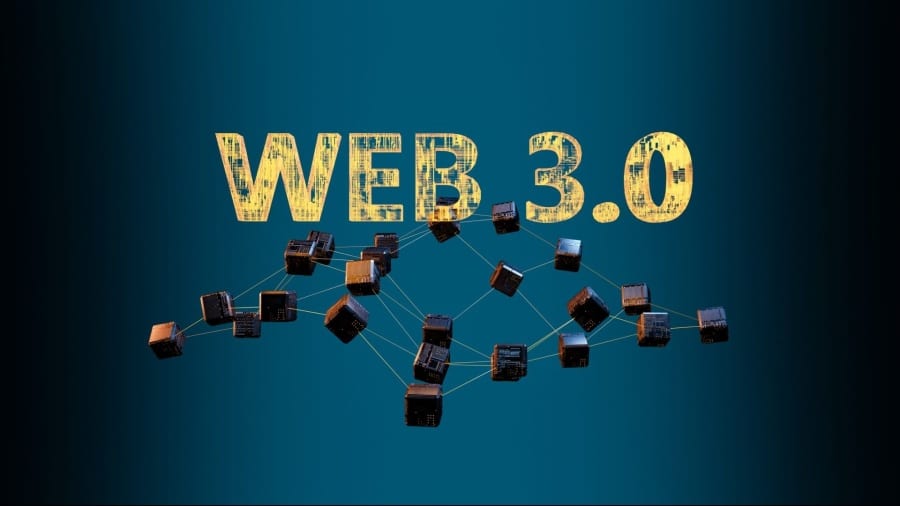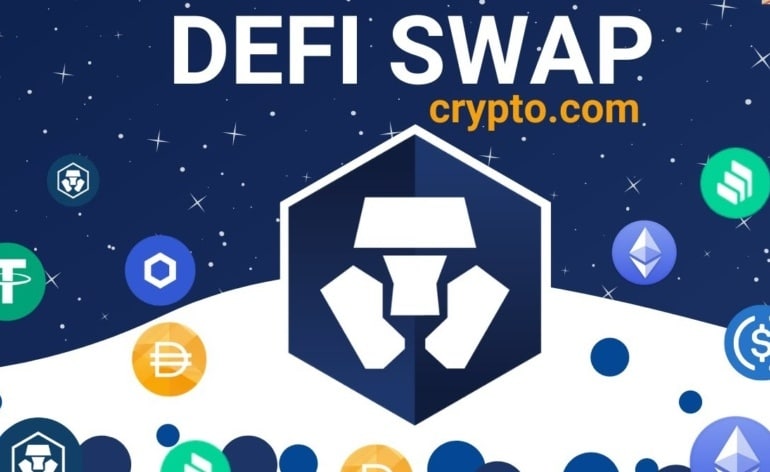The next generation of the Internet, Web 3.0, will integrate a range of new technologies, from artificial intelligence and machine learning to decentralized finance (Defi) and augmented reality, and the opportunities for investors look solid.
Today’s Internet infrastructure, called Web 2.0, is dominated by a few large technology companies. The explicit goal of Web 3.0 is to put power back in the hands of users, not just large corporations. For investors currently embracing Web 3.0 innovations, the implications can be significant.
In this article, we are going to discuss how to invest in web 3.0, should you invest in Web 3.0 etc. but before that let’s learn about the basics of Web3.0
What Is Web 3.0?
Web 3.0 is the third generation of the Internet, an upgrade of the existing Web. When the Internet first appeared in the 1990s, its capabilities were limited. Back then, being connected to the Internet meant being able to write HTML code.
All websites were static and HTML-based. For ordinary people, it is just a place to read information. As such, Web 1.0 is often referred to as the read-only web.
Then came companies that expanded their adoption of the Internet. For example, think about social media, Facebook, and Twitter.
Rather than writing extensive HTML code to get profiles online, these companies have enabled a wider audience to become part of the internet with just an internet connection and a mobile phone.
Ordinary people can now read and write on the Internet but Web 2.0 claims that some tech giants rule the Internet. For example, Meta now owns a number of social media platforms, starting with Facebook because of this, they enjoy a monopoly on their data and can use it to their advantage.
Web 3.0 was born for free users from the control of tech giants. It aims to decentralize the currently centralized Internet by giving users control over their own data. Web 3.0 = Read + Write + Own
Why Care About Web 3.0?
Evolution is inevitable. Everything is evolving, and the current stage of the Internet will evolve into a better version, Web 3.0. However, the idea is still in its early stages. Everyone is finding ways to reach the ultimate goal of this new internet: decentralization. Therefore, if the investment proves profitable, it can be a great opportunity to invest as it will yield large returns.
Top 5 Web 3.0 Investment Opportunities in 2022
Mentioned below are the different ways to invest in Web 3.0
1. Cryptocurrencies
There are different ways to invest in Web 3.0, but the most popular one is with cryptocurrencies. Various Web 3.0 projects are built on top of the blockchain. Cryptocurrencies can be thought of as assets that represent them.
For example, the Brave browser is a blockchain-based, decentralized alternative to Chrome. The native token, the cryptocurrency used to purchase or pay for services in the Brave browser, is the Basic Attention Token (BAT).
If Brave Browser seems like a strong candidate for a decentralized alternative to Google Chrome, we recommend investing in the BAT cryptocurrency.
Similarly, various other decentralized projects have been built using blockchain technology, allowing investors to invest in them by representing cryptocurrencies. As these projects gain momentum, the value of the corresponding crypto is likely to rise as well. Cryptocurrency is one of the most popular methods to invest in Web 3.0.
2. Coin Sets
Coin sets are baskets of cryptocurrencies based on specific themes. Let’s say you’re convinced of the rise of the metaverse. However, many great metaverse projects have been built.
It can be tedious to research them all and decide which one to invest in. Alternatively, you can invest in the Metaverse Coin Set curated by Murex. This coin set contains the top cryptos representing the Metaverse project. The coin set also helps with diversification and risk management, as instead of investing in one cryptocurrency, it invests in multiple cryptocurrencies.
3. NFTs
NFT stands for Non-Fungible Tokens. As the name suggests, these are non-fungible (or non-reproducible) tokens or digital assets. The concept was originally intended to tokenize digital art on the blockchain.
The artist initially released their own graphics as their NFT. It soon spread to other art forms, such as music albums, and videos.
However, the definition and scope of NFTs have expanded over time. For example, a Web 3.0 game project launches a multiplayer cricket game online.
However, there is a need to create a team of players to play the game, and these players are sold as NFTs. Every player is different, unique, and has special abilities. These characteristics also improve performance when playing games. As the score increases, the demand for and value of each player increases.
Therefore, you can make a good profit by selling them. Basically, play and earn. How cool is that?
Finally, Web 3.0 will include objects sold as NFTs. So if you do the right research and invest wisely, you can achieve significant growth.
4. Stocks
Let’s say you don’t want to invest in cryptocurrencies or NFTs due to market volatility. There are still opportunities to invest in Web 3.0. You can invest in the stock of companies building Web 3.0 infrastructure. Various Web 2.0 companies are helping build the infrastructure for their next-generation projects.
For example, blockchain and related activities require high computational power. This means semiconductor companies like AMD could benefit. Similarly, Coinbase is one of the largest cryptocurrency exchanges in the world. Both companies are public, but we encourage you to invest in them as they contribute to Web 3.0.
5. Metaverse
The metaverse is one of the hottest topics in Web 3.0. It’s a virtual world where you can basically do anything. Take a walk around the neighborhood, buy your dream home, or attend a Justin Bieber concert with your friends. Combine social media and virtual reality with blockchain networks to create virtual worlds on the internet.
There are several ways to invest in Web 3.0 by investing in the metaverse. For example, you can build a house and sell it to a buyer. Or, if you don’t know how to design, you can buy commercial buildings (such as shopping malls) in the metaverse and rent them out to brands to showcase their products or host virtual public deals. Yes, it is true. Brands are rushing to open stores and advertise in the metaverse.
Think of all the ways you can earn money in real life and do it in the metaverse. No wonder Facebook and Microsoft are building the metaverse.
Also read: How Web 3.0 is changing music industry
Benefits of Web 3 Ecosystem
Here are some of the critical benefits of Web 3.0.
1. Access to data
Web 3.0 is a connected ecosystem that enables interoperability. We use decentralized apps (dApps), whose access cannot be censored or restricted.
Web 3.0 is therefore not under the control of a single entity, and users have continuous access to information.
2. Data Ownership
Web 2.0 is largely driven by centralized platforms (Google, Facebook, Amazon, etc.) that monetize user data in various ways. Users do not have complete control over the personal information and content they share on these platforms.
But Web 3.0 allows users to control their online data with the help of a decentralized network. Users can share information based on their preferences.
3. Opportunities for content creators
Most content creators today struggle to take advantage of what they create because of platform middlemen. Fortunately, Web 3.0 allows developers to extract real value from their work. More ways to withdraw.
- First, the author will have full ownership of his work.
- Second, Web 3.0 interoperability allows developers to find new tools and markets to expand their reach.
- Finally, tokenization will allow creators to facilitate shared ownership of their digital assets, thereby increasing the liquidity of their assets.
4. Uninterrupted service
Due to the distributed nature of the Web3 ecosystem, all data can be stored on distributed nodes.
This eliminates all single points of failure and reduces the chances of service interruption or banning a particular account for technical reasons.
5. Improved security
Decentralization and cryptography form the basis of public blockchains to help prevent security breaches (such as the 51 percent attack) and protect user data from attackers.
Conclusion: Should You Invest in Web 3.0?
The answer to this question depends on the investor’s goals, risk tolerance, and personal preferences. Investing in emerging and largely unproven technologies may involve a high level of risk, but when investors do their due diligence, the rewards can be even greater. Investing in bitcoin in 2012 is arguably far riskier than in 2022, and early bitcoin investors have seen spectacular gains (and very large losses). Early Web 3.0 investors may see profits, but they are not guaranteed. People looking for a safe place to deposit their savings for the future should avoid investing in Web 3.0. On the other hand, those looking for speculative opportunities may find Web 3.0 an attractive bet.
***





